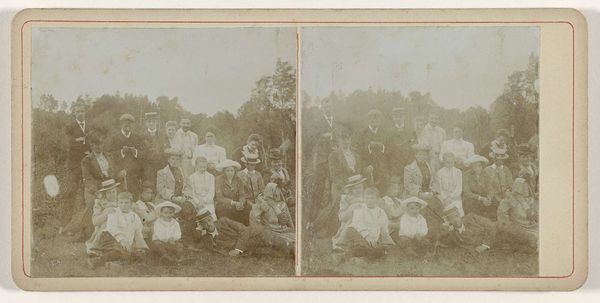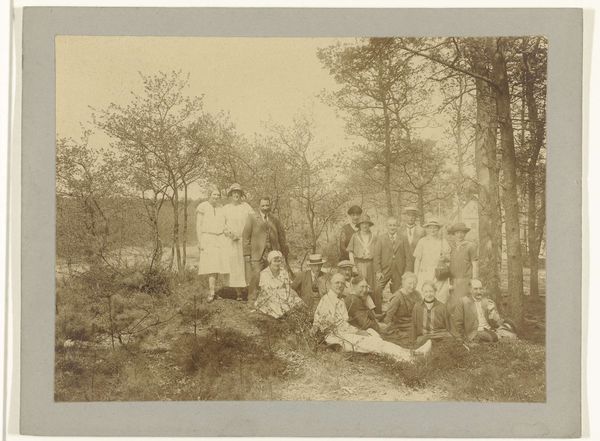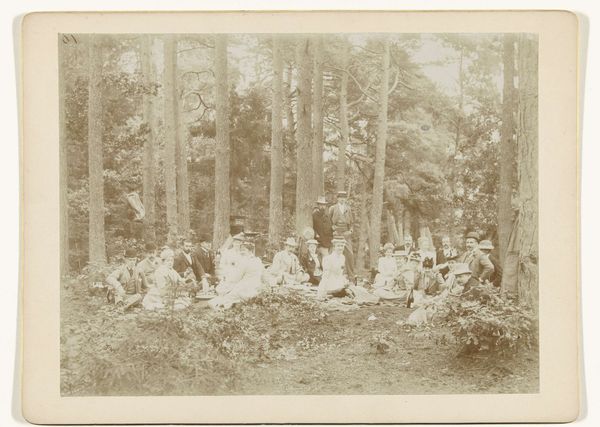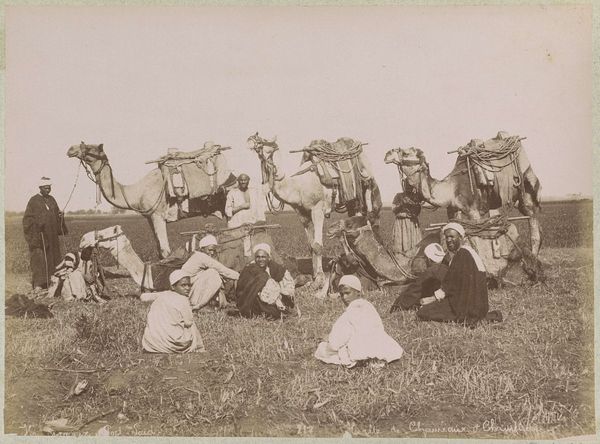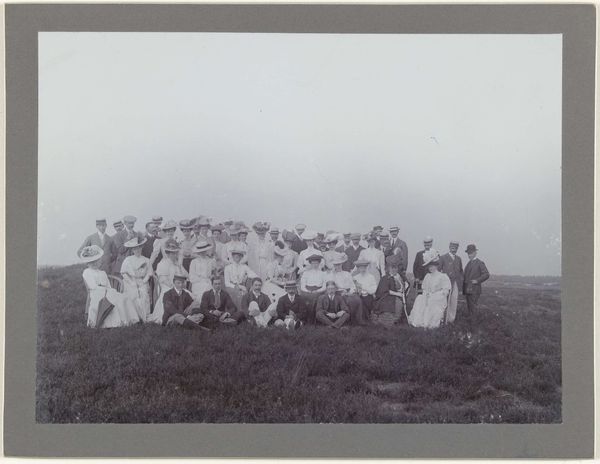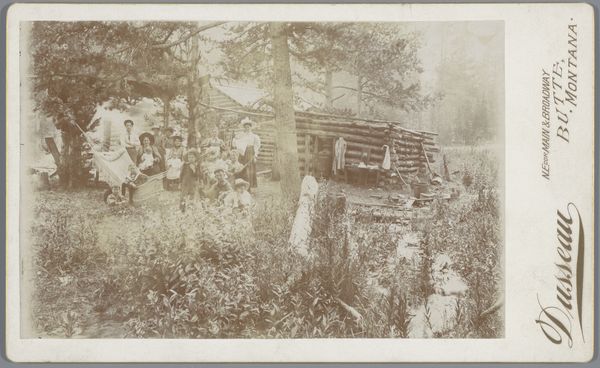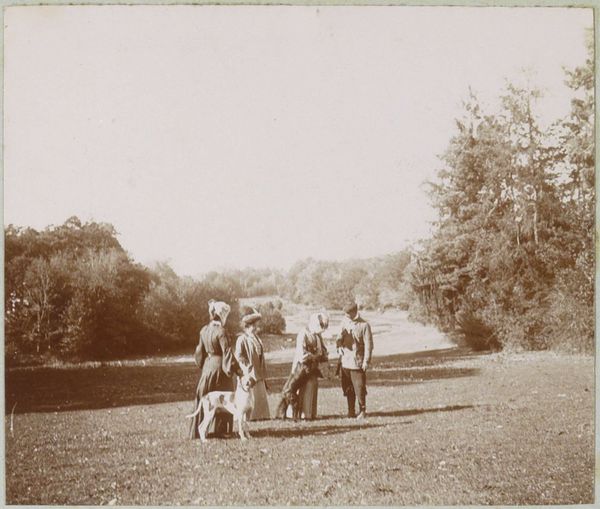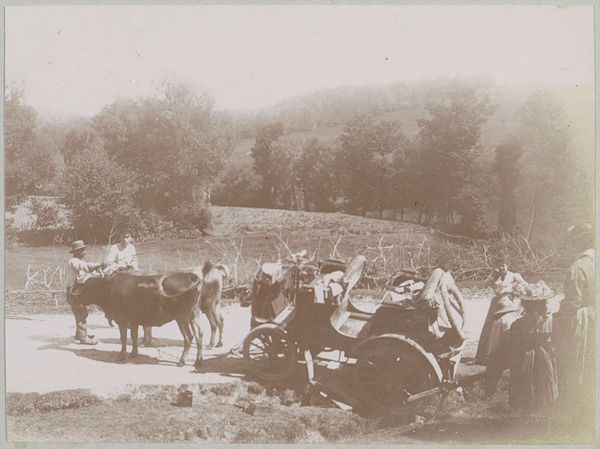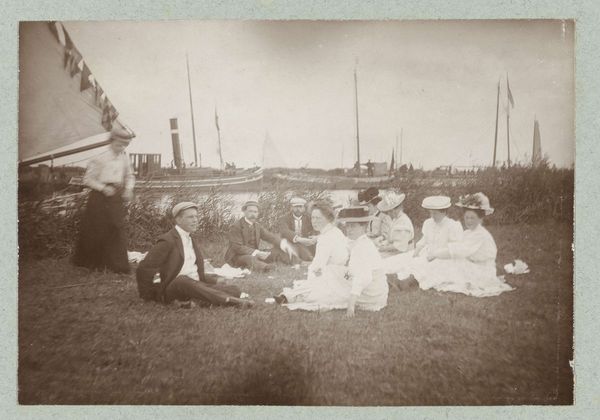
De families Kessler en Heyning uitrustend in het hoge gras, vermoedelijk tijdens een wandeltocht in de Harz c. 1903 - 1908
geldolphadriaankessler
Rijksmuseum
photography
portrait
pictorialism
landscape
outdoor photograph
photography
group-portraits
Dimensions: height 80 mm, width 110 mm, height 363 mm, width 268 mm
Copyright: Rijks Museum: Open Domain
Editor: We’re looking at “The Kessler and Heyning Families Resting in the High Grass, probably during a hiking trip in the Harz,” a photograph taken around 1903-1908, artist unknown. The sepia tone lends it an air of nostalgia, almost like looking into a dream. What symbols do you see in this scene? Curator: This photograph, with its deliberate arrangement of figures nestled in the tall grass, evokes a sense of cultivated leisure. Notice how the clothing distinguishes social class, but the act of 'resting' diminishes these barriers to an extent, recalling a simpler time, even if illusory. What’s absent speaks loudly too - machinery or indications of labour beyond that of cultivated nature. Editor: That’s fascinating. It feels idyllic, but also very constructed. Curator: Exactly. It brings up interesting points regarding the symbolic weight of “nature” at the beginning of the 20th century. How much is this idealized landscape actually a reflection of a desire to escape the rapidly industrializing world? Consider the subtle symbolism of the clothing: stiff collars versus flowing dresses… do they convey more than just a fashion statement? Editor: I hadn’t thought of that contrast as a form of symbolism. It makes me consider how much the wealthy created their own mythology of nature. Curator: Precisely. It shows the family wanting to represent themselves through specific iconography that communicated both wealth and specific cultural values linked to nature, family and leisure time, doesn’t it? It speaks volumes about the cultural memory they wished to cultivate. What is retained from past visual representation that can create continuities? Editor: Looking at it that way, it's far more complex than it initially appeared. I guess I'll never look at an old family portrait the same way again! Curator: And that's the beauty of art, isn't it? It's always offering new perspectives and helping us decode the symbols that shape our world.
Comments
No comments
Be the first to comment and join the conversation on the ultimate creative platform.
